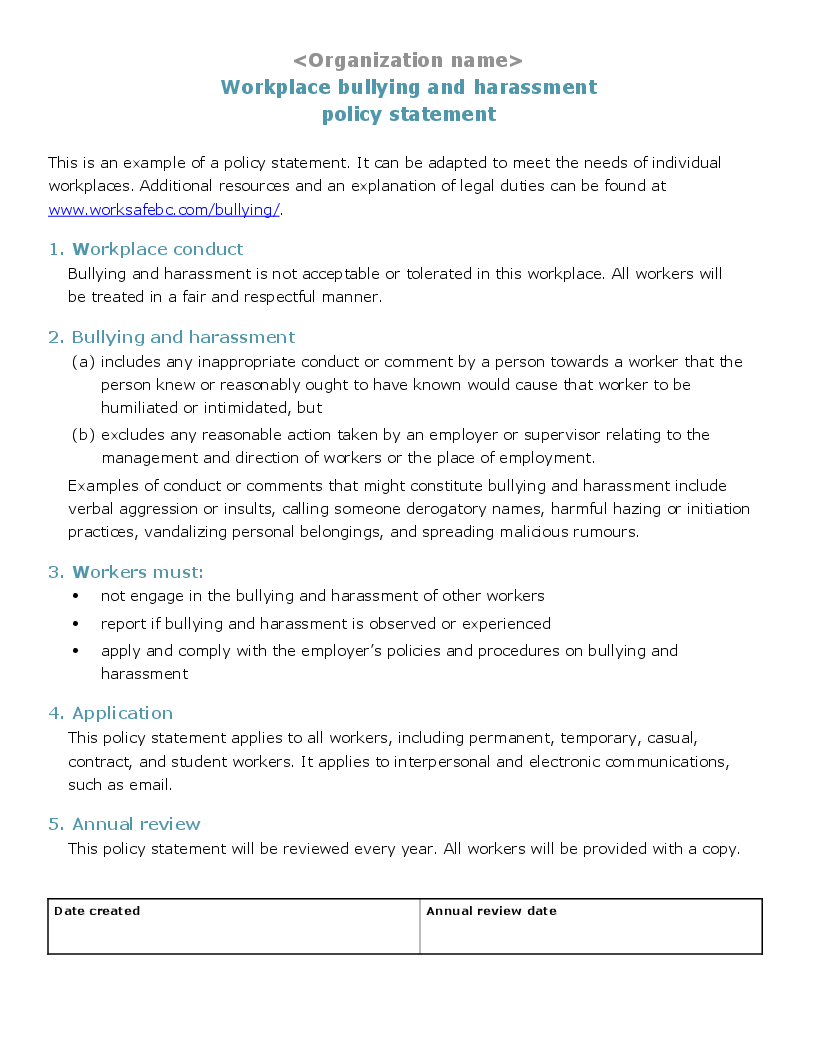Bullying & harassment
Bullying and harassment in the workplace can take many forms, including verbal aggression, personal attacks, and other intimidating or humiliating behaviours. If workplace bullying and harassment is not addressed, it can lead to lost productivity, anxiety, and depression.
- What is bullying and harassment?
- Procedures for workers
- Procedures for employers
What is bullying and harassment?
A worker is bullied and harassed when someone takes an action that they knew or reasonably ought to have known would cause that worker to be humiliated or intimidated. When an employer or supervisor takes reasonable action to manage and direct workers, it is not bullying and harassment (see OHS policy P2-21-2 for more information).
Examples of behaviour or comments that might constitute bullying and harassment include verbal aggression or insults, calling someone derogatory names, harmful hazing or initiation practices, vandalizing personal belongings, and spreading malicious rumours.
Procedures for workers
If you are a worker and you have witnessed or experienced bullying and harassment in your workplace, you must report it to your employer. If your employer has not taken reasonable steps to address the incident, you can call the Prevention Information Line to contact an officer to discuss the incident. If the matter is still not resolved after reporting to your employer and speaking with a prevention officer, you may submit a Bullying and Harassment Questionnaire.
Learn more about responding to workplace bullying and harassment.
Procedures for employers
Employers must implement procedures for responding to reports or incidents of bullying and harassment. The procedures must ensure a reasonable response to the report or incident and aim to fully address the incident and ensure that bullying and harassment is prevented or minimized in the future.
Developing and implementing procedures for how the employer will deal with incidents or reports of workplace bullying and harassment must include the following:
- How and when investigations will be conducted
- What will be included in the investigation
- The roles and responsibilities of employers, supervisors, workers, and others (such as investigators, witnesses, or union representatives)
- Follow-up to the investigation (description of corrective actions, time frame, dealing with adverse symptoms, etc.)
- How investigations will be documented and records maintained (employers should maintain records of investigations but should not submit to WorkSafeBC unless requested by an officer)
A guide is available with additional details about procedures for investigating incidents of bullying and harassment.
Employers are responsible not only for establishing procedures, but for ensuring they are followed.
Workers are required to cooperate with investigators and provide any details of acts of bullying or harassment they have experienced or witnessed.




